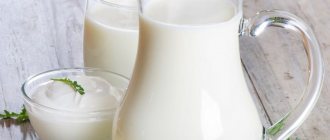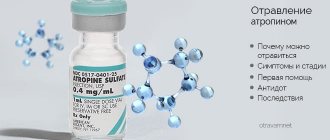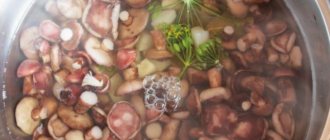Properties
Small concentrations of potassium permanganate have an astringent effect, and saturated solutions of the drug have an irritating, cauterizing effect.
Potassium permanganate is capable of neutralizing some poisons. This property is used for food poisoning or poisoning with chemical substances for gastric lavage.
The product has a deodorizing effect.
The antiseptic properties of the drug are used for gargling for infectious diseases, for treating burns and wounds.
Precautionary measures
To eliminate the consequences of potassium permanganate poisoning, follow the safe work rules in production:
- use respirators to reduce inhalation of Mn dust;
- observe the rules of personal hygiene - take a shower after finishing a working day, wash your work clothes more often;
- Visit your doctor periodically and check the amount of manganese in your urine.
In everyday life, use only slightly pink solutions for rinsing the mouth and bathing babies. Do not eat foods stored near potassium permanganate.
Potassium permanganate may pose the greatest health hazard to preschool children. Keep the drug out of the reach of children. After using potassium permanganate, close the bottle with a stopper and immediately put it in the first aid kit.
Application
Treatment with potassium permanganate is carried out for various skin diseases: infected wounds, ulcers, burns.
Potassium permanganate is used in the complex treatment of certain gynecological and urological diseases, such as colpitis and urethritis. To treat these ailments, potassium permanganate is used as a solution for washing and douching.
For infectious and inflammatory diseases of the mouth and throat, rinse with a solution of potassium permanganate.
A weak solution of potassium permanganate is used to rinse the nose for sinusitis, gargle for pharyngitis and sore throat.
But it should be understood that potassium permanganate is a local remedy . When gargling, it does not penetrate into the deep tissues, which means it cannot affect the causative agents of sore throat, which are located in the deep tissues of the tonsils. Potassium permanganate kills bacteria only on the surface of the tonsils. Therefore, you should not rely only on rinsing with a raster of potassium permanganate for a sore throat. The product can only be used in complex treatment and with great care so as not to cause a throat burn.
For severe sweating of the feet, take baths with a solution of potassium permanganate.
Newborns are bathed in a weak solution of potassium permanganate.
Mode of application
- For washing wounds, use an aqueous solution of potassium permanganate 0.1-0.5%.
- To rinse the throat and mouth, prepare a 0.01% to 0.1% solution.
- Burns and ulcerative surfaces are lubricated with a 2% or 5% solution.
- For gastric lavage in case of poisoning, for douching and rinsing, take a 0.1% solution.
Possible consequences
The danger of potassium permanganate is that it is not destroyed by the liver, is not excreted by the kidneys and intestines, but accumulates in them. For this reason, the level of Mn in the blood increases only within an hour after entering the body. Then its quantity is normalized.
The accumulation of a chemical element in the liver and kidneys leads to disruption of their functions and causes severe consequences of potassium permanganate poisoning:
- excess Mn in the brain causes seizures already in the initial stage of intoxication;
- with excessive amounts of manganese in the liver, toxic hepatitis develops;
- an excess of the element in the kidneys leads to nephropathy with impaired function - a decrease and then a complete cessation of urination;
- pneumonitis and pneumonia develop;
- phlegmon and abscesses of internal organs are formed;
- bleeding from the stomach and esophagus is one of the reasons for the sad outcome of poisoning.
Pregnant women may experience abortion due to increased contractions of the uterus.
Potassium permanganate has a toxic effect on the blood. In people with low acidity of gastric juice, the respiratory properties of hemoglobin change. Manganese intoxication in the clinical form of methemoglobinemia occurs with pronounced cyanosis and shortness of breath.
The progression of potassium permanganate poisoning is accompanied by burn shock. Without treatment, the serious condition threatens the patient's life. The lethal dose for a child varies from 1 to 3 g, and for an adult – 0.3 – 0.5 g/kg.
Preparation of the solution
What do you need to know to properly dilute potassium permanganate for medicinal purposes?
It is necessary to remember that for a 1% solution of potassium permanganate you will need 1 g of potassium permanganate crystals and 100 g of water. An ordinary teaspoon has a volume of 5 ml. If you pour potassium permanganate into it and remove the pile with a knife, you will get 6 g of crystals. From this amount of potassium permanganate, 600 ml of water is needed to prepare a 1% solution.
A 1% solution of potassium permanganate is almost black in color. This is a very strong solution . It is not used for internal consumption to avoid burns to the mucous membrane. A 1% solution is used to treat fungal diseases, warts, and bedsores. This solution has a drying and locally irritating effect, significantly accelerating blood circulation processes.
To prepare weak solutions, take a smaller amount of potassium permanganate crystals.
To prepare solutions, you cannot use metal containers , otherwise this chemical will come into contact with the metal, which will cause the loss of some of the medicinal properties and, in addition, will leave indelible marks on the dishes. Glass containers are best suited for preparing solutions from potassium permanganate.
To prepare the solution, you need to take warm, boiled water. In warm water, crystals dissolve much better. It is also much more comfortable to rinse and wash with a warm solution.
Potassium permanganate crystals should not be taken with your hands , as you can get burned and leave unsightly marks on the skin that are difficult to wash off. A match or the tip of a knife will help you take a few crystals.
Be sure to filter the resulting solution through gauze folded in several layers so that undissolved crystals do not get on the mucous membranes or skin and cause a burn.
When preparing the solution, first pour the required amount of water into the container, and then add dry crystals of potassium permanganate.
A solution of potassium permanganate retains its medicinal properties for several hours after preparation. As soon as the liquid turns brown, there is no point in using it: all the beneficial properties are lost.
A strong solution of potassium permanganate, when used for a long time, can cause skin burns.
Potassium permanganate crystals should be stored in a dark, dry place in a tightly closed package or container.
You may be allergic to potassium permanganate
The issue of using potassium permanganate in child care is very controversial.
On the one hand, all mothers and grandmothers know that baths with a solution of potassium permanganate help dry out the baby’s delicate skin (we’ve all gone through this ourselves), and on the other hand, doctors call bathing in potassium permanganate the main cause of chemical eye burns in children.
Moreover, they categorically prohibit giving it to children orally for gastric lavage due to possible burns and perforation of the intestines by undissolved potassium permanganate crystals.
What should parents do? What should you listen to: folk wisdom or qualified advice from doctors? Here, perhaps, it is worth remembering that any medicine can become poisonous if used incorrectly or in excessive quantities. In any case, parents themselves must decide who they are more willing to believe. I will give arguments from both supporters and opponents of the use of potassium permanganate in the care of young children.
For potassium permanganate
Proponents of potassium permanganate advise young mothers who are collecting a home first aid kit for a newborn to definitely put potassium permanganate powder in it. After all, it will be needed to disinfect bath water, to disinfect the skin and, of course, to treat the navel.
How to properly prepare an aqueous solution of potassium permanganate is usually taught in schools for expectant and young mothers, but if someone does not have the opportunity to attend them, these recommendations will be of good help.
The first thing to remember: the potassium permanganate solution must be freshly prepared and strained. It is prepared in several stages. First, potassium permanganate is diluted in a glass of water to a rich crimson color, then filtered through several layers of gauze, and only after that a small amount of the solution is added to the bath until the water turns pale pink.
The second thing that must be remembered is that you cannot immediately pour potassium permanganate crystals into the bath. If at least one of them does not dissolve and gets on the delicate baby skin, the baby may get a burn!
Bathing the baby
In the first days, when the umbilical wound has not yet healed, the newborn is washed in a slightly pink solution of potassium permanganate. (However, when treating the navel, the solution is made bright pink, more concentrated than for a bath with potassium permanganate.)
Bath the baby every day at the same time, before evening feeding. The bath is washed with baby soap, doused with boiling water, the water temperature is checked again (it should be +36-37°C), a solution of potassium permanganate prepared as described above is added, and the baby is lowered into the water.
Some young mothers, fearing that the baby might slip out of their hands and choke, refuse bathing altogether and wash the baby while they sit. Although in this position the soapy body is really easy to miss.
Experienced parents use a regular thin diaper for safety.
Through it, the baby’s head and back are supported with the left hand, and with the right hand they wipe the baby’s neck, arms, body, armpits, legs and inguinal folds with a soft, soapy sponge (the sequence is not random, it must be followed!).
Then they wash their hair with a soapy hand and finally wash their face with boiled water from a mug (!). Also rinse with boiled water. Infants should not be rubbed after bathing; they are “huddled” with a diaper and stroked several times.
Until the umbilical wound has healed, children simply need to take a bath with potassium permanganate. Moreover, you need to take it in a small baby bath (since in a large bath, potassium permanganate spoils the enamel). And when the navel heals, you can move to the larger one.
The diagnosis of chickenpox is made by the characteristic rash. The main thing in treatment carried out at home is to prevent the blisters from becoming suppurated. Brilliant greens or potassium permanganate are excellent for this (children tolerate alcohol solutions very painfully). The main treatment was described in the previous chapter, so here I will focus only on the factors accompanying recovery.
From the very first day, the child is bathed in a bath with a weak solution of potassium permanganate. It is important to provide his skin with the most comfortable conditions: during this period, cotton underwear and loose, loose clothing are required. If your baby has itching, you should tell your doctor: he will prescribe antiallergic medications. For high fever and chills, antipyretics are prescribed.
From the onset of the disease, the child is isolated from other children for 9 days.
Potassium permanganate is a very strong oxidizing agent. It should be stored in tightly closed containers, protected from light and moisture. A concentrated solution of KMnO4 is also placed in dark places: manganese salts decompose in the light and lose their disinfecting properties. Aqueous solutions of potassium permanganate are stored for no more than 10 days.
Against potassium permanganate
And now other opinions on this topic.
Having asked medical workers: “Should I or should I not use potassium permanganate when bathing an infant?”, I received approximately the following answer: “Most parents believe that potassium permanganate is necessary to disinfect water and prevent infection of the baby. But this is far from true.
Because the minimum concentration of antiseptic potassium permanganate is 0.01% solution. But only a stronger solution – 0.1% and higher – can neutralize bacteria. (For those who do not remember mathematics well, I will explain: a 0.01% solution is 1 g per 10 liters of water, 0.1% is 10 g per 10 liters.
) So we get a paradox: in disinfecting concentrations, potassium permanganate is dangerous, but in non-harmful concentrations it is useless.
In addition, in pharmacological reference books, potassium permanganate is mentioned not as a prophylactic agent, but as a therapeutic agent - for washing infected wounds, douching, lubricating ulcerative and burn surfaces.”
Serious complications
News in the newspaper: “Yesterday evening a boy, 2 years 4 months old, was admitted to the 1st Children’s Hospital. Obviously, out of childhood curiosity, he tasted the potassium permanganate crystals. The result is a chemical burn to the throat, esophagus, poisoning...”
It’s one thing when this happens due to children’s ignorance, and completely different when it happens due to the ignorance of adults.
Sometimes it happens that a sick child is given not just a concentrated solution of potassium permanganate, but a solution containing its undissolved crystals, thinking that this will be healthier and more effective.
But the end result of this “disservice” is stomach burns, intestinal bleeding and other complications requiring urgent surgical intervention. In addition, potassium permanganate is not excreted from the body, and, when accumulated, can lead to brain damage. Even the death of a child is possible.
Sometimes children with poisoning and indigestion are given enemas with potassium permanganate. The results of the next 2-3 hours reassure parents: vomiting and diarrhea really stop. However, apparent prosperity is deceptive...
The fact is that diarrhea stops because under the influence of potassium permanganate a fecal plug is created that prevents emptying.
And this is very dangerous! After all, with loose stools, the body is freed from pathogens of intestinal infections, toxins and other toxic substances formed in the intestines as a result of the disease. When a fecal impaction is created, harmful substances linger in the intestines and begin to be absorbed into the blood.
In this case, the child’s condition sharply worsens: shortness of breath, bloating and severe vomiting appear. In such cases, the child must be urgently hospitalized.
I think it would be logical to study the instructions and explanations for the item you are going to use. And this is three times true when it comes to drugs whose area of influence is your unique body.
Source: https://allergiya.radiomoon.ru/mozhet-byt-allergija-na-margancovku/
Treatment
For oral use in case of poisoning, prepare a solution: add 2 crystals of potassium permanganate to 200 g of cooled boiled water. The solution is drunk at one time. The antiseptic properties of potassium permanganate will help stop the source of infection in the stomach.
The victim is given to drink from 500 to 1.5 liters of a light pink solution of potassium permanganate, then pressure is applied to the root of the tongue to induce a gag reflex.
Add 3 potassium permanganate crystals to 200 g of warm boiled water. Rinse after eating with a freshly prepared solution. During the procedure, you should not swallow liquid. After rinsing, lubricate the tonsils with any vegetable oil and do not eat anything for 1 hour.
First aid for manganese poisoning
After potassium permanganate poisoning, the patient must be taken to the toxicology department of the hospital. If an emergency team has been called, available measures are carried out at home. First aid for potassium permanganate poisoning:
- An emergency procedure is gastric lavage and mouth rinse. To prepare it, use 2 liters of warm water mixed with hydrogen peroxide 3%–100 ml, acetic acid 3%–200 ml. The composition is also used by toxicologists in the hospital. Hydrogen peroxide is added to prevent the formation of caustic alkali and atomic oxygen. For children, a vitamin C solution is added at the rate of 10 ml per liter of liquid. The procedure is repeated several times until the wash water becomes discolored.
- In order to remove crystals and cleanse the mucous membranes of the mouth, lips, and tongue, it is necessary to wipe with the mixture in a 1:1 additive ratio. Potassium permanganate is quickly absorbed by tissues.
Contraindications
Potassium permanganate solutions should not be used by people who are hypersensitive to this drug.
It is forbidden to use highly concentrated solutions of potassium permanganate, as this can cause burns (for external use) and poisoning (for internal use).
The first signs of potassium permanganate poisoning are vomiting, diarrhea, and severe acute pain in the mouth, esophagus, and stomach.
Since ancient times, potassium permanganate has been used in folk medicine as a universal antiseptic. It is used to wash the stomach in case of food poisoning (the gastric mucosa reacts almost instantly to the drug, which guarantees its fairly rapid action). Babies are often bathed in water with the addition of potassium permanganate to help the umbilical cord heal faster. And in principle, potassium permanganate is an excellent remedy for washing wounds and abrasions.
Thanks to the chemical oxidation reaction provoked by potassium permanganate, the wound is disinfected and the healing process proceeds faster. However, with all its positive qualities, sometimes potassium permanganate can cause health complications. This may be caused by an individual intolerance to this drug by the body, that is, an allergy to potassium permanganate. Such intolerance is most often congenital and manifests itself at the first contact of a person with a substance.
Causes
As mentioned earlier, the main cause of allergy to potassium permanganate is individual intolerance to this drug . If you notice a deterioration in your condition after contact with this substance, you should consult an allergist who will help you conduct an allergen test and determine whether potassium permanganate is really the cause of the deterioration.
The cause of unpleasant consequences from contact with potassium permanganate will also be an overdose of this substance . Potassium permanganate is used in the form of a weakly concentrated aqueous solution. By itself, this substance has the form of small brown granules. After dilution with water, the solution takes on a shade ranging from deep lilac to transparent pink, depending on the concentration of the solution.
It is important to remember that using a concentrated solution of saturated color can lead to unpleasant consequences. Also, direct contact of undiluted potassium permanganate in the form of granules with human skin or mucous membrane can be dangerous, so you should handle this drug very carefully.
Although, nowadays there is less to fear, because the sale of potassium permanganate without a prescription is prohibited, and it can only be obtained with a doctor’s opinion. So cases of burns from contact with potassium permanganate began to occur much less frequently.
How to do a cleansing enema for weight loss
An enema should be given to mechanically cleanse the intestines of stagnant feces. The procedure also irritates (stimulates) the intestinal muscles, causing them to work more actively. All this has a weight loss effect, which is associated with the removal of intestinal contents. The enema solution consists of warm water and an additional substance, for example, salt or preparations with manganese. To do a cleansing enema you need:
- Buy Esmarch's mug.
- Pour 1-2 liters of water solution with potassium permanganate at room temperature.
- Lie on your side, bend one leg at the knee and pull it towards your chest.
- Place the mug vertically, carefully inserting the tube into the anus.
- During the transfusion of liquid into the intestines, it is necessary to retract the stomach or perform a circular massage.
- When Esmarch's mug is empty, you need to lie on your right side for 7 minutes.
- You should only go to the toilet when you can no longer stand it.
- After the procedure, you should not be active; it is better to rest on the bed for an hour or two.
Cleansing enemas are beneficial for our body in strictly dosed quantities. In addition to helping to get rid of stagnant feces, microflora (useful bacteria) are washed out, which does not help the human body at all. If you follow a diet, 1-3 procedures per day are allowed. If you do not adhere to a special diet, then use the method no more than 1-2 times a month.
Symptoms
It is important to be able to distinguish an allergic reaction to potassium permanganate from the symptoms of a burn with this substance due to improper use. This ensures that you receive the help you need as quickly and adequately as possible.
Manifestations of an allergic reaction to an intolerant substance are a rather individual process. But there are some general guidelines for any type of allergy.
- Allergic rhinitis.
- Allergic conjunctivitis.
- Swelling of the mucous membranes.
- Rash.
- Redness of the skin (complete or localized). Swelling of the skin.
- Itching.
If you do not pay attention to these symptoms in time, then all this can even lead the victim to anaphylactic shock, which is an advanced form of an allergic reaction.
If these symptoms occur, you should immediately contact an allergist , who will provide first aid and help you choose a treatment that can cope with all the symptoms.
However, victims often perceive the consequences of improper use and dosage of potassium permanganate as an allergy. They also need to be well known so as not to be confused with an allergic reaction, since they require completely different treatment.











